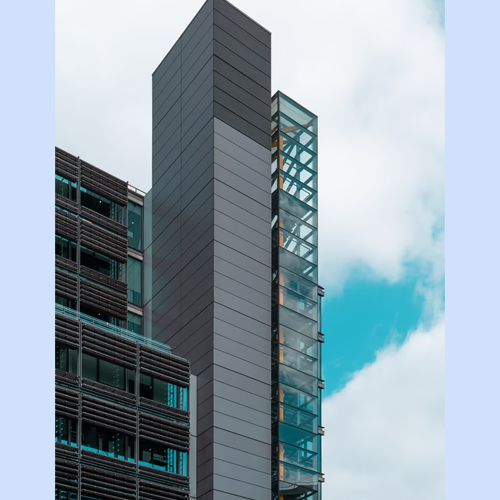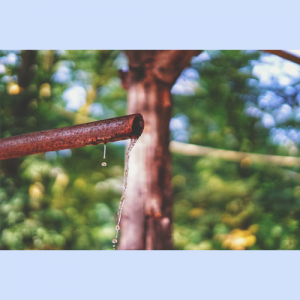
The Regulation regarding the quality of drinking water imposes very strict standards to ensure the distribution of quality drinking water to all Quebecers. Thus, cases of contamination are rather rare, and for this reason, citizens consume their water with confidence.
However, despite the efforts of the municipalities, the potable character of water can be altered once it passes through a building’s interconnection point, more commonly known as the water inlet. In fact, municipalities, whose drinking water distribution facilities serve 86% of the population in Quebec1, have the obligation to provide drinking water in accordance with the Regulation. But for their part, the owners of institution, business and industrial buildings are required to protect it against any form of accidental contamination. Collaboration between the two parties is therefore essential to safeguard public health.
Most cases of contamination of drinking water occur inside a building when a phenomenon called backflow occurs, or a reversal of the direction of water flow. A backflow can be caused by pressure fluctuation, a broken pipe or high demand for water during peak hours, especially in an industrial park. Applications connected directly to the drinking water supply network generate cross-connections, which present an increased risk of contamination. Some of the most common applications connected to drinking water include detergent dispensers, humidifiers, fire sprinkler systems and heating and cooling networks. Some of these applications contain chemicals which, in the event of backflow, could disperse into drinking water and be carried throughout the building, or even enter the municipal water supply and contaminate the entire neighborhood.
Given the high risk that certain contaminants have on human health, the Building Code of the Régie du bâtiment du Québec (RBQ) imposes very strict regulations on building owners. It requires them to install a backflow prevention device in all places where there is a risk of contamination of the drinking water supply network as well as at the building’s water inlet. The owners or managers of institutional, business, and industrial building as well as certain residential owners, are subject to this regulation, regardless of the year of construction of the building. The RBQ also warns owners: in the event of contamination, they could be liable to criminal prosecution in addition to having to bear the costs of decontamination.
The protection of cross-connections is a complex subject that is still relatively misunderstood. Currently, there is little training on the subject for owners and municipalities. There is no obligation to record cases of contamination, which wrongly suggests that the probability of such an event occurring is low. As a result, most building owners and managers are misinformed or unaware that they are subject to a regulation aimed at preserving drinking water. For example, many people believe that they are protected by a grandfather clause because of the year of construction of their building while others, aware of the law, are waiting for an opinion from the RBQ to act. It also happens that some buildings are isolated by backflow prevention devices, but these are not certified annually, as required by law. In all cases, the building and the municipal aqueduct are vulnerable in the event of contamination of drinking water.
Communication and support are essential to gain the buy-in from owners. Informing them of their obligations and of the risks involved in the event of negligence is an excellent starting point. Owners of buildings that pose a higher risk, particularly in the food, pharmaceutical or petrochemical industries, can be approached as a priority. The municipality may also offer information sessions or provide incentives to encourage owners whose buildings are compliant. The training of municipal employees is also a success factor in the implementation of a municipal program to protect risky cross-connections.
Since the implementation of the “Stratégie québécoise d'économie d'eau potable”, several municipalities have required the institutional, business and industrial buildings in their territory to install water meters. Some took this opportunity to demand or recommend the addition of a backflow prevention device at the building's water inlet. This is certainly a step in the right direction!
Every municipality has many buildings subject to the law, including public swimming pools, arenas, and libraries. Even City Hall, as a commercial building, is no exception to the rule. Off-building applications connected to the drinking water network, such as a decorative fountain or a water jet in a park, must also be isolated using backflow prevention devices. A municipality that wishes to undertake an awareness-raising process with owners on its territory will obviously be more successful if its own buildings comply with the law or are in the process of becoming.
Preserving drinking water is the responsibility of both municipalities and building owners, who must work together to achieve better results. After all, this is a public health issue!
For more information, visit the RBQ website at www.rbq.gouv.qc.ca, and enter "drinking water contamination" or "backflow prevention device" in the search bar.
1. Ministère de l'Environnement et de la Lutte contre les changements climatiques. Directory of Municipal Drinking Water Distribution Facilities. Online: http://www.mddelcc.gouv.qc.ca/eau/potable/distribution/index.asp
We use cookies to understand how you use our site and to improve your experience. This includes personalizing content and advertising. By continuing to use our site, you accept our use of cookies, terms and conditions, privacy policy. Confused? Send us an e-mail.
I acceptWe use cookies
Respecting your privacy matters to us. We use cookies to personalize our content and facilitate your digital experience. Some cookies may be collected with your consent.
Essential
Essential cookies help make a website usable by enabling basic functions such as page navigation and access to secure areas of the website. The website cannot function properly without these cookies.
Performance
These cookies enable us to analyze navigation on our sites and improve their operation.
Customization
Preference cookies enable a website to remember information that modifies the behavior or appearance of the site, such as your preferred language or the region you are in.
Targeted advertising
These cookies help us limit the number of times you see an advertisement, personalize our offers and services according to your centers of interest, measure the effectiveness of an advertising campaign, and so on. They may be shared with our partners.
We use cookies
Respecting your privacy matters to us. We use cookies to personalize our content and facilitate your digital experience. Some cookies may be collected with your consent.
